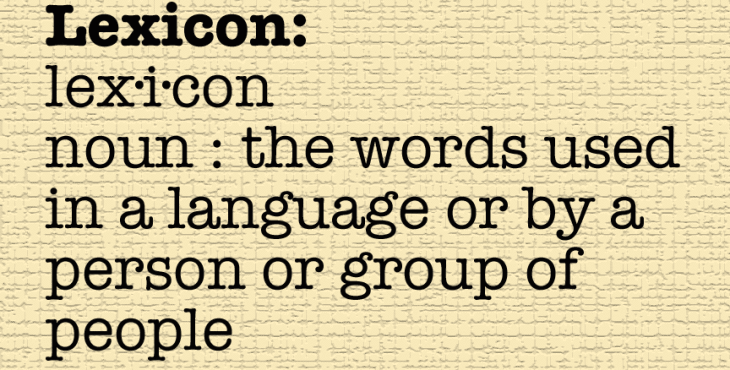By Anthony Cody.
The following terms have taken on special meaning as the religion of test-worship has taken over our schools. Those not raised in the church of Father Coleman might benefit from a translation into plain English.
This lexicon reflects a complete worldview. The enthusiastic embrace of these meanings is required to function in a 21st century school in the United States.
Accountability. To be required to count things for someone else, so they can judge whether we have done our job or not. This means we must deliver counts of test questions answered right or wrong, and we must ourselves be scored. Then we must be rewarded or punished for our scores. Only then are we accountable for results.
Rigor. The level of difficulty required to make student work of value. To demonstrate rigor, tests must be so difficult that only about 30% of the students can pass them. This proves we have high expectations. Those unwilling to raise the bar in this manner thus have low expectations.
Grit. This is the ineffable quality that distinguishes the 30% of students who manage to scrape their way to proficiency on the rigorous exams.
College and career ready. Someone in the 30% who has passed the tests used to decide if they are worthy of the opportunity to earn a living.
Text complexity. In order to be rigorous, the material students read must be complex, otherwise what is the point?
Close reading. This is the mode by which complex texts must be examined by students starting in kindergarten and the first grade. The reading must be of short passages, done without context. This prepares the reader to interpret the short passages devoid of context featured in the tests.
Standards. The specifications for the tests that will be used to rank and sort students, teachers and schools.
Clear learning objectives. The standards provide the concepts and skills students will be tested and scored on. Learning objectives break these down into daily goals. It is important that these be clearly posted, and that students be able to explain what they are, and why they are important.
Data driven. All important decisions must be made based on what test scores tell us. Thus we constantly steer towards higher scores, and the result is constant improvement.
Deep dive. A close examination of the precious test score data. It is not enough to look superficially at test score data. We need to examine the data deeply and in fine detail. Granular – it should be granular.
Formative assessment. The frequent mini-tests we give to make sure our students are being prepared for the major tests for which we are accountable.
Alignment. If we are driven by data, then everything we do, every lesson, every piece of curriculum, aligned to the tests that will measure our success.
Fidelity. The degree to which we faithfully follow the instructional materials and methods that is aligned to the tests that will be given. If adopted scripted materials fail to yield predicted results, you can be sure that the reason they did not work as promised was not because of any flaws in the materials, but rather is because they were not implemented “with fidelity.”
Multiple measures. If you are not happy with using test scores to rank and sort students and teachers, we understand. We will find some other things to count and add them to the pile. Feel better now?
In order to function as a smooth cog in the machinery of 21st century miseducation, these definitions must be accepted and acted upon. This year we saw an interesting glimpse of how this paradigm works, even when educators know better. The Department of Education in New York convened a panel of educators to set cut scores on the new Pearson Common Core-aligned tests. This article spilled the beans about the process.
Tina Good, coordinator of the Writing Center at Suffolk County Community College, said her group produced the best possible cut scores for ELA tests in grades 3 to 6 — playing by the rules they were given.
“We worked within the paradigm Pearson gave us,” she said. “It’s not like we could go, ‘This is what we think third-graders should know,’ or, ‘This will completely stress out our third-graders.’ Many of us had concerns about the pedagogy behind all of this, but we did reach a consensus about the cut scores.”
The result was that this panel professional educators provided the state of New York with the cut scores that meant only about 30% of the state’s students were ranked proficient. A dominant paradigm is a powerful way to control our behavior.
Words shape our world and reflect the worldviews of the speakers. The dissonance between what we know as educators, and the demands of this paradigm is tremendous. Reclaiming the true meaning of the words being used to shape and shade our reality is a small start on the road back to sanity.
(This is not the first attempt to translate Reformese into English. Here is another by Karen Fraid.)
Update, Nov. 26,2014: Here is an education BS generator someone has invented. Very useful for your next grant application!
What do you think? Are there more terms you would like to add to the Education Reformer’s Lexicon?






howardat58
The “College and Career ready” term is the most bizarre.
Kids who are determined to be (potentially of course) College and Career ready at grade 3 (or 4, or 5, or 6 ..) may not be able to keep it up, and, worse, those who are late developers may now never get the chance. This is apart from the BA in arts, plastic or visual or dramatic etc, for which a talent in algebra does seem to me to be unnecessary.